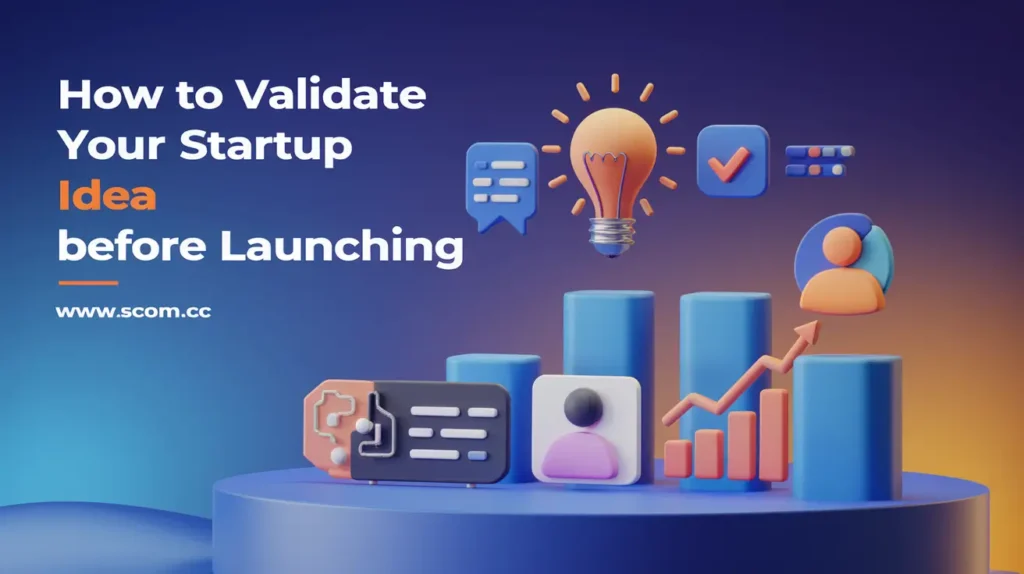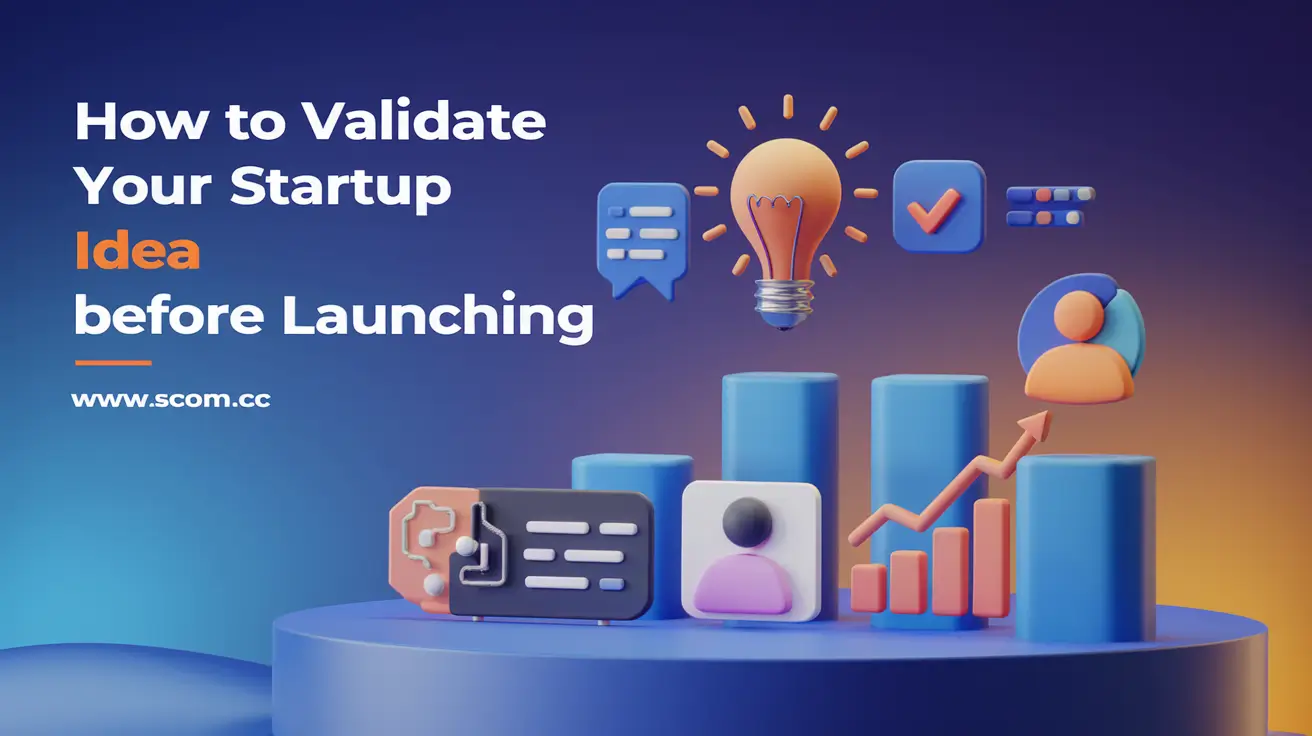How to Validate Your Startup Idea Before Launching

How to Validate Your Startup Idea Before Launching
In the competitive landscape of entrepreneurship, validating your startup idea before launch is crucial for minimizing risks and ensuring market fit. A well-validated idea not only increases your chances of success but also provides a solid foundation for scaling your business. In this comprehensive guide, we will walk you through the essential steps to thoroughly validate your startup idea and set the stage for a successful launch.
Understanding Market Demand
Conduct Thorough Market Research
Before diving into the development of your startup, it's imperative to conduct detailed market research. Market research helps in understanding the demand for your product or service. Begin by analyzing existing market trends, consumer behavior, and industry reports. Utilize tools such as Google Trends, industry journals, and market analysis reports to gather valuable data.
Identify Target Audience
Defining your target audience is a critical step in market research. Create detailed customer personas based on demographics, psychographics, and buying behaviors. This will help you tailor your product to meet the needs of your ideal customers. Conduct surveys, focus groups, and interviews to gain insights into their preferences, pain points, and willingness to pay for your solution.
Analyze Competitors
A thorough competitor analysis provides insights into the current market landscape. Identify key competitors and evaluate their strengths, weaknesses, pricing strategies, and market positioning. Understanding your competitors helps in differentiating your startup and finding unique value propositions that resonate with your target audience.
Validating the Problem and Solution
Define the Problem Statement
Clearly articulate the problem your startup aims to solve. A well-defined problem statement is crucial for validating the relevance of your idea. Ensure that the problem is significant enough to warrant a solution and that your target audience is actively seeking a resolution.
Develop a Minimum Viable Product (MVP)
Creating a Minimum Viable Product (MVP) allows you to test your startup idea with minimal resources. An MVP includes the core features necessary to address the problem and validate your solution. Launching an MVP enables you to gather feedback from real users and make iterative improvements based on their responses.
Seek Feedback from Early Adopters
Engage with early adopters to gain feedback on your MVP. Early adopters are typically more willing to try new products and provide constructive feedback. Utilize surveys, interviews, and user testing sessions to collect insights on usability, functionality, and overall satisfaction. This feedback is invaluable for refining your product and addressing any issues before a full-scale launch.
Testing Market Viability
Run a Pilot Test
Conducting a pilot test is a practical approach to assess market viability. Choose a small, targeted segment of your audience to participate in the pilot. Monitor their interactions with your product, track usage patterns, and evaluate their responses. A successful pilot test indicates a positive reception and validates the demand for your solution.
Evaluate Financial Feasibility
Assessing the financial feasibility of your startup is crucial for long-term success. Create detailed financial projections, including costs, revenue streams, and profitability estimates. Ensure that your business model is sustainable and that you have a clear understanding of the financial requirements needed to support your startup through its initial stages.
Measure Key Performance Indicators (KPIs)
Define and monitor relevant Key Performance Indicators (KPIs) to gauge the effectiveness of your validation efforts. KPIs may include metrics such as customer acquisition cost, conversion rates, retention rates, and user engagement levels. Regularly reviewing these metrics helps in identifying areas for improvement and refining your strategy accordingly.
Refining Your Startup Idea
Iterate Based on Feedback
Utilize the feedback gathered during validation to make necessary adjustments to your startup idea. Iterative development involves continuously refining your product based on user feedback and market insights. Implement changes that enhance the user experience, address pain points, and align with market demands.
Revisit Market Research
As you refine your startup idea, revisit your market research to ensure that your changes align with evolving market trends and customer preferences. Stay informed about industry developments and emerging trends that may impact your startup's success.
Develop a Go-to-Market Strategy
Crafting a comprehensive go-to-market strategy is essential for a successful product launch. Define your marketing objectives, target audience, positioning, and promotional tactics. Develop a detailed plan that outlines how you will introduce your product to the market, attract customers, and achieve your business goals.
Preparing for a Successful Launch
Build a Strong Brand Identity
Establishing a strong brand identity is crucial for differentiating your startup and creating a lasting impression. Develop a compelling brand story, create a memorable logo, and define your brand's voice and messaging. A strong brand identity helps in building credibility and attracting loyal customers.
Implement Effective Marketing Strategies
Develop and execute effective marketing strategies to generate buzz and drive interest in your startup. Utilize various channels such as social media, content marketing, email campaigns, and partnerships to reach your target audience. Focus on creating valuable content and engaging with potential customers to build awareness and drive conversions.
Monitor and Adapt
Once your startup is launched, continue to monitor performance and adapt your strategies as needed. Stay responsive to market changes, customer feedback, and industry developments. Regularly review your KPIs and make data-driven decisions to ensure ongoing success and growth.
In conclusion, validating your startup idea before launching is a crucial process that involves thorough market research, testing, and refinement. By following these steps, you can significantly increase your chances of success and build a strong foundation for your startup.

If you enjoyed this article and found it valuable, we encourage you to explore our news and valuable information section, where you'll find more relevant and up-to-date content that may pique your interest. Additionally, if you are seeking advice or need guidance on a specific topic, we suggest visiting our services section. There, you will find a variety of options designed to assist and support you in addressing your needs. Feel free to check out both sections to get the information and assistance that best suits your requirements.

Leave a Reply